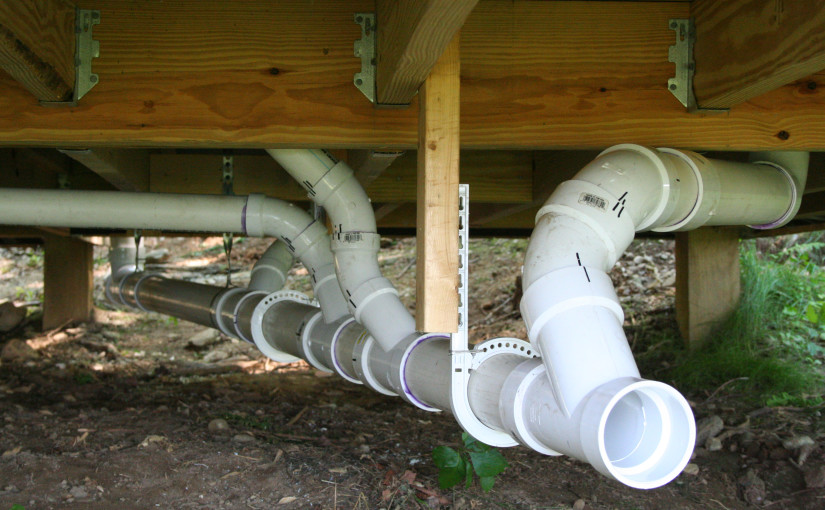Today was a different sort of job – as caretaker of a mountain summer cabin, I make sure the pipes don’t freeze come winter time. There’s just a few steps in getting the system ready for freezing temperatures. Draining down the water lines is one of them. This is easy if the system was designed with pitched supply pipes ending at valves. The drains are also handled easily, as long as the traps have drain plugs. After draining the water from the traps, potable-water antifreeze (often called RV antifreeze) is poured back in the drain, and they’re all set. Toilets are little different.
Toilets have no drain, and water left in the siphon section will dilute antifreeze to the point where it will freeze. The RV antifreeze must be used without dilution to provide adequate protection. The last thing you want is to return to the cabin in the spring and find a ruptured toilet. When I checked my cabin today in 10 degree weather, the antifreeze in the toilet had turned to a semi-solid slush, showing that I had failed to completely remove the water from the trap before adding the antifreeze.
First, you might want to clean the toilet – good time to do it, if it never gets done any other time of year. Next, shut off the water supply to the tank and flush the toilet, then take the cover off the tank and hold the flapper valve open and get as much water out of the bottom of the tank as possible. End up by taking a sponge and soaking up any water left in the bottom of the tank. The tank should be dry. Now, take a plunger and plunge the bowl to force-flush as much water down the drain as possible. Repeat this until plunging doesn’t do anything more. The water remaining in the bowl must be soaked up with a sponge. This is where you will be glad you cleaned it first, and have some disposable gloves on hand. Soak up the remaining water from the bottom of the bowl. This will empty the trap. Now, add RV antifreeze – add enough to get one flush out of the toilet, then add to bring it to normal level. When you are done, put a sign on the seat ‘Do Not Use’. See you in the Spring.
